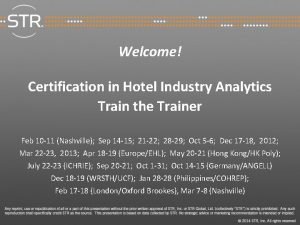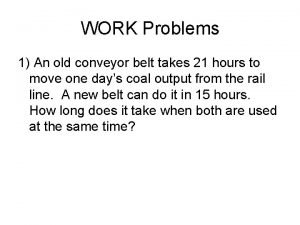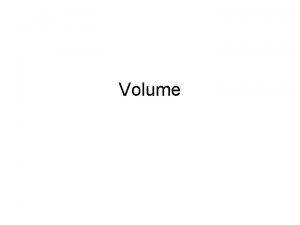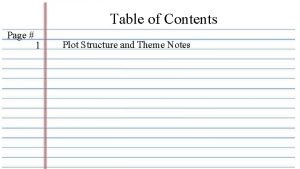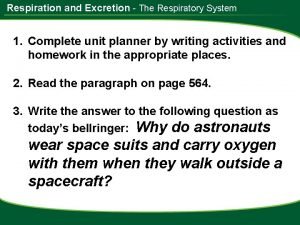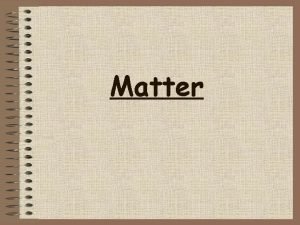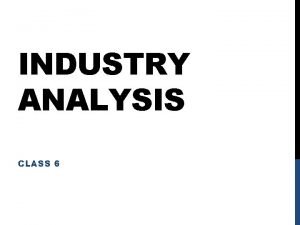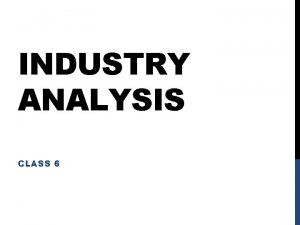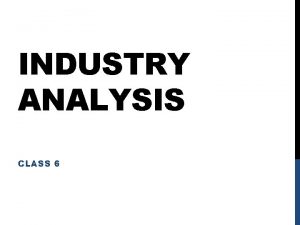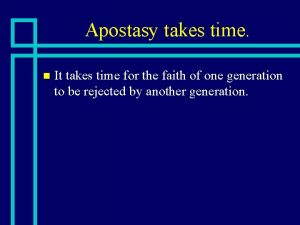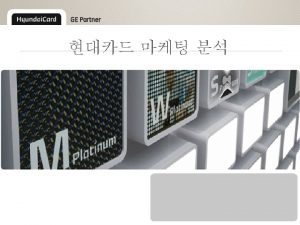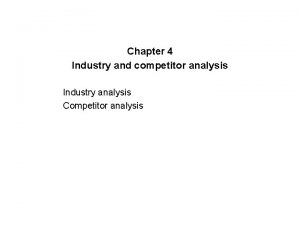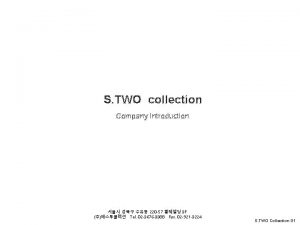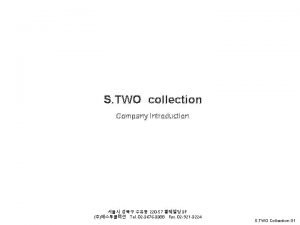Industry Analysis Introduction n Industry analysis takes two





















- Slides: 21

Industry Analysis

Introduction n Industry analysis takes two broad forms q q n Porter’s Five Forces Analysis Brandenberger and Nalebuff’s Value Net Outcome q q assessment of industry and firms performance identification of key factors affecting performance show changes in business environment affect performance assess effectiveness of generic business strategies

Introduction (cont. ) n Limitations q q restricted view of demand growth conducted at the industry rather than firm level limited role for government qualitative rather than quantitative n n difficult to combine results with different combinations of “high”, “medium” and “low” into an overall assessment The five forces analysis is an organizing framework not a set of principles

Five-Forces Analysis: overview Entry Supplier Power Internal Rivalry Substitutes and Complements Buyer Power

Internal Rivalry n n Jockeying for market share Define the market q assess methods of competition: price and non-price n price rivalry is intense when q there are many sellers q products of different sellers are relatively homogeneous q there are low consumer switching costs q terms of sale/prices are unobservable; prices slow to adjust q sales orders are large and infrequent q there is excess capacity q there is little history of facilitating practices n erodes profits by driving down prices

Internal Rivalry (cont. ) n Non-price rivalry q q q n n advertising product proliferation R&D Erodes profits by raising costs Rivalry is intense q q when consumers are motivated to shop around and can do so when cost increases cannot be passed on in prices

Five-Forces Analysis: overview Entry Supplier Power Internal Rivalry Substitutes and Complements Buyer Power

Entry n Profits attract entry which erodes profits q q n steals incumbents’ market share increases internal rivalry Entry is affected by q q q economies of scale and scope consumer attitudes to reputation and brand loyalty ease of access to key inputs n technology; locations; distribution channels

Entry (cont. ) n Entry is affected by: q q experience curve network externalities n q q q advantage to firms with large installed base government regulation protecting incumbents expectations regarding post-entry competition exit costs n if entry creates specific assets that are unrecoverable

Five-Forces Analysis: overview Entry Supplier Power Internal Rivalry Substitutes and Complements Buyer Power

Substitutes and Complements n Distinct from entry q q may be in related but not identical industries new substitutes can be really problematic n n n render existing products obsolete gain from learning economies influenced by and take advantage of changes in fashion

Substitutes and complements n n n Substitutes erode profits Complements boost demand Factors to consider q availability n q price/value characteristics n q product performance characteristics little threat/opportunity if priced too high relative to value price elasticity of industry demand n if high the increased prices drive away consumers

Five-Forces Analysis: overview Entry Supplier Power Internal Rivalry Substitutes and Complements Buyer Power

Supplier and Buyer Power n Supplier power looks at strength of an industry’s suppliers q n An industry’s suppliers have power if q q n can they erode profits through their pricing policies? they are concentrated their customers are locked in through specific investments Need not relate to importance of the input q for example if major input is produced competitively

Supplier and buyer power n Buyer power is similar q ability of an industry’s customers to erode profits n n n by negotiating tough prices by demanding specific product design Supplier and buyer power have many features in common

Supplier and buyer power n Supplier (and buyer) power is affected by q concentration n q q q a highly concentrated supplying or buying industry exercises more power purchase volume: price discounts to large buyers availability of substitutes relationship-specific investment threat of forward integration ability to price discriminate

Coping with the Five Forces n n Identifies threats to profitability for all firms How to circumvent? q position to outperform rivals n q q develop a cost or differentiation advantage identify particular industry segment that is less competitive change the five forces n n n create switching costs (tie-in sales; warranty policy; . . ) entry-deterring strategies forward/backward integration to limit supplier/buyer power

Coopetition and the Value Net n Brandenberger and Nalebuff identify a weakness in the five forces analysis q n views all firms as threats to profitability But interaction can be positive as well as negative q firms increasingly cooperative n n n with suppliers/buyers with direct competitors Cooperation can take many forms

Coopetition n Efforts to set technology standards q n n Promote favorable regulatory environment Cooperation with suppliers q q n HDTV; DVD to improve quality to improve efficiency: JIT Cooperation with buyers to reduce inventory costs

The Value Net n Looks at suppliers, customers, competitors, complementary firms q q assesses threats and opportunities is there unexplored potential for profitable cooperation? n n n example of DVDs five-forces analysis predicts intense brand rivalry but the value net introduces the possibility of q q cooperation among manufacturers to boost acceptance cooperation with suppliers to boost supplies of discs

 It takes two stuck in slide
It takes two stuck in slide It takes two
It takes two The prairies poem analysis
The prairies poem analysis [email protected]
[email protected] Plastic industry introduction
Plastic industry introduction Hotel math fundamentals
Hotel math fundamentals An introduction to the catering industry
An introduction to the catering industry Introduction to hospitality and tourism industry
Introduction to hospitality and tourism industry Mice in hospitality industry
Mice in hospitality industry Pam jogged up a hill at 6 km/h
Pam jogged up a hill at 6 km/h The amount of space an object takes up
The amount of space an object takes up Tucker turtle technique
Tucker turtle technique Lamb of god, who takes away the sins of the world song
Lamb of god, who takes away the sins of the world song The characters struggle takes place in his/her own mind
The characters struggle takes place in his/her own mind Path of air flow chart
Path of air flow chart Ratatouille plot
Ratatouille plot Eclectic approach psychology
Eclectic approach psychology Green plants make their own food by photosynthesis
Green plants make their own food by photosynthesis Photolysis of water
Photolysis of water Mass vs weight
Mass vs weight Anything that has mass
Anything that has mass Matter is anything that has and takes up
Matter is anything that has and takes up





